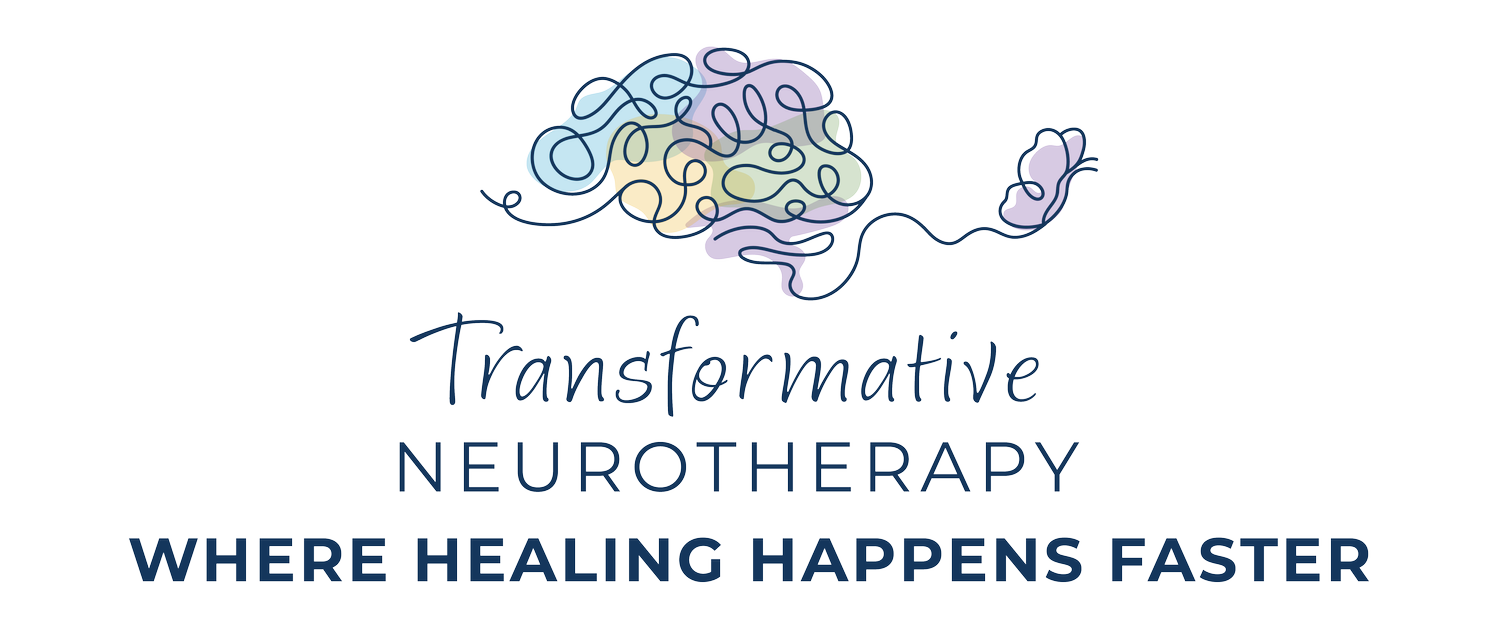FROM INTAKE TO IMPACT: TARGETED EEG NEUROTHERAPY FOR CALM AND FOCUS (Podcast Episode 5)
by Heather Putney, PHD, LMFT, CSAT-S, QEEG-DL
EXECUTIVE DIRECTOR, FOUNDER
Untethered Therapy and Transformative Neurotherapy
At Transformative Neurotherapy, we know that neurotherapy can seem mysterious—until you walk through it step by step. For us, the process begins long before any device touches the head. We start with a comprehensive intake: exploring symptoms, medical history, medications, supplements, past head injuries, and personal goals. Every piece of that context matters. Each factor influences how the brain performs day to day and how it responds to stimulation.
Once we have that foundation, we gather objective data using EEG and brain mapping to reveal patterns of overarousal, underactivity, or imbalance—areas that might contribute to challenges with focus, anxiety, sleep, or emotional regulation. Instead of guessing, we use this information to design a precision plan: which frequencies to target, where to place tools, and how to pace sessions so the brain learns, adapts, and holds new patterns over time.
Layering Modalities for Lasting Change
The first session often combines three modalities to accelerate progress gently and safely.
We begin with pulsed electromagnetic field (PEMF) therapy, which delivers magnetic pulses at specific frequencies—including those the brain already generates. For example, 13 to 15 Hz supports midline focus and sustained attention. PEMF can also target the gut to support the gut–brain axis, especially when inflammation is part of the picture. Most clients don’t feel PEMF; it’s quiet, steady support that reduces inflammation signaling and helps networks move toward balance without effort.
Next, we often add photobiomodulation (LED light therapy). This modality uses precise wavelengths of light to support cellular energy, blood flow, and neurogenesis. We typically use 810 nm and 1070 nm light—or a combination—delivered through the hair to reach deeper brain structures. Placement matters: we might aim for the anterior cingulate to support emotional regulation and task switching, the insula to calm stress reactivity, or language circuits to strengthen communication pathways. The light feels subtle—maybe a touch of warmth—but it offers a potent biological boost. Each wavelength and placement follows the EEG-informed map, aligning the technology with each client’s unique goals and needs.
Finally, we introduce low-current electrical stimulation, a refined, brain-focused relative of a TENS unit. Using conductive gel and small electrodes, we apply gentle currents well below FDA safety thresholds—always starting low and adjusting carefully. Clients often describe the sensation as “zippy,” “tingly,” or “alive.” The current’s frequency guides the effect: faster bands (around 13–15 Hz) can sharpen focus for drifting attention, while slower, parasympathetic-leaning frequencies promote calm and safety for trauma and hypervigilance. Over time, the brain learns to access these balanced states more easily, even outside the session.
Tracking Progress with Transparency
We value transparency and accountability at every stage. Symptoms such as anxiety, focus, mood, and sleep are tracked each visit. Periodic EEG rescans show measurable changes—how brain activity has shifted, which regions have stabilized, and how networks are communicating more efficiently.
Many clients notice early shifts: better sleep, clearer thinking, steadier focus. But the most significant gains typically emerge between sessions nine and ten, as the brain’s repeated practice consolidates into lasting change. The process—intake, mapping, targeted stimulation, tracking, and rescanning—keeps care data-driven, collaborative, and aligned with each client’s goals.
Grounded in Safety, Guided by Care
Safety anchors everything we do. Electrical currents stay far below four microamps, with most sessions operating under two. PEMF and LED are chosen for gentle but meaningful biological effects that support circulation, metabolism, and neuroplasticity. Our goal is never to overwhelm—it’s to guide. No jackhammers when a chisel will do.
By sequencing modalities thoughtfully, pairing state training with cellular support, and continually referencing objective data, neurotherapy becomes a well-orchestrated journey of change. Clients leave sessions understanding what each tool did, why it was placed where it was, and how it connects to what they experience in daily life—sleeping more deeply, focusing more easily, or meeting stress with steadier physiology.
Over time, those moments of change add up. The brain begins to hold a new baseline of calm, clarity, and resilience—a foundation it can sustain long after the sessions end.
